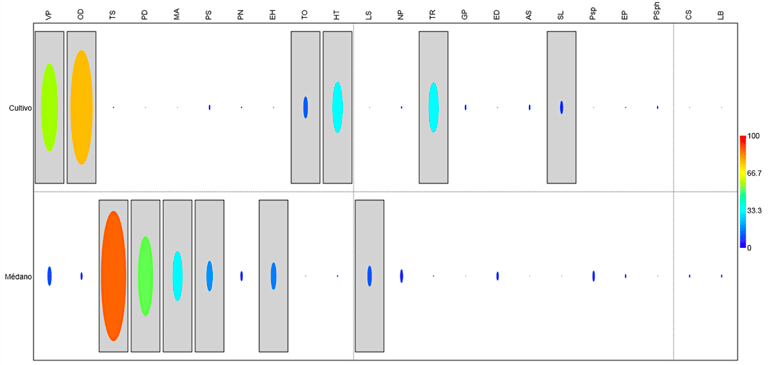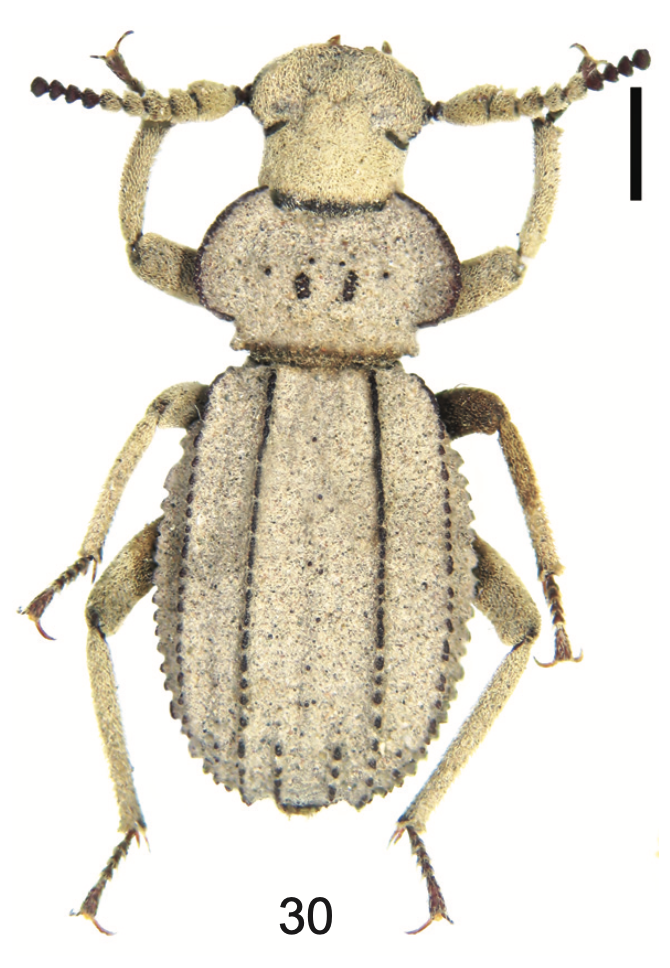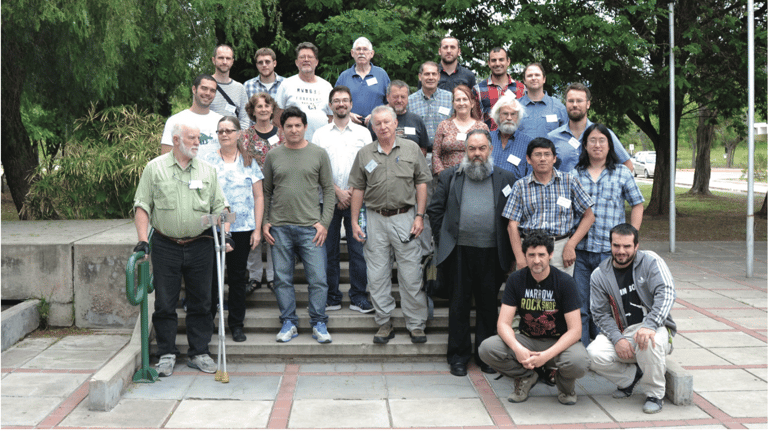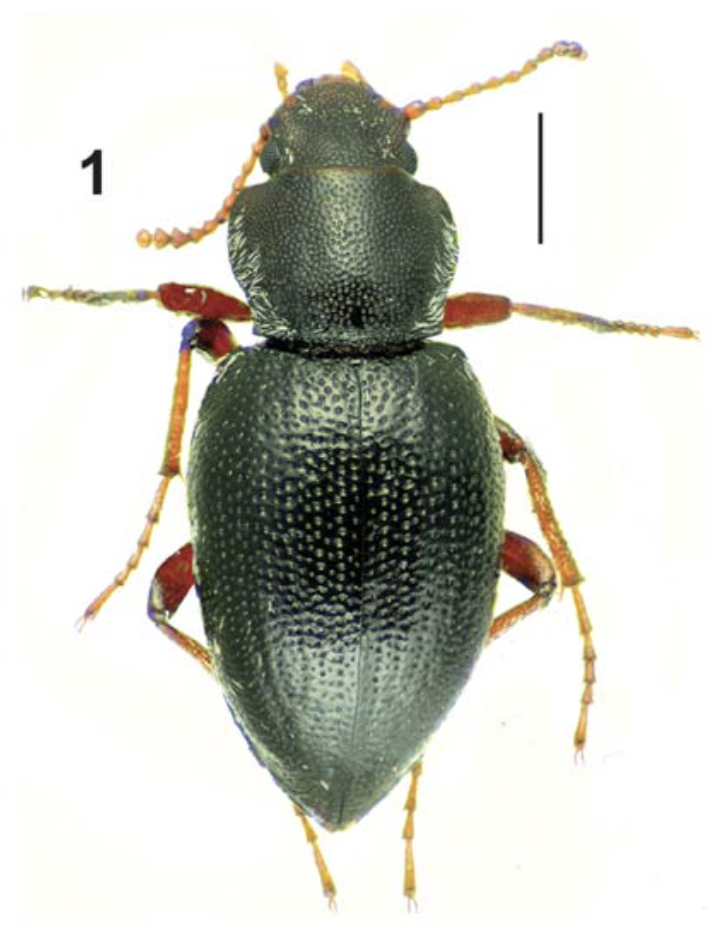Darkling Beetles
Aballay FH, Flores GE, Silvestro VA, Zanetti NI, & Centeno ND. 2016
An illustrated key to, and diagnoses of the species of Tenebrionidae (Coleoptera) associated with decaying carcasses in Argentina.
Annales Zoologici 66, 703-726.
In this study we identified adults of Tenebrionidae associated mainly with pig carcasses and human cadavers lying in different arid and semiarid areas of Argentina. This article provides an illustrated key to 29 Tenebrionidae species of the potential forensic importance, accompanied by diagnoses, and habitus photographs of these taxa. The recorded species of darkling beetles belong to four subfamilies: Alleculinae (one species of Alleculini), Diaperinae (two species of Crypticini), Tenebrioninae (15 species, ten belonging to the tribe Scotobiini, three to Opatrini, two to Alphitobiini and one species of Tenebrionini), and Pimeliinae (10 species, three belonging to the tribe Epitragini, two to Evaniosomini, two to Praociini, one species from each of the tribes Trilobocarini, Edrotini and Elenophorini). A new species of Eutelocera Solier (Pimeliinae: Praociini) collected from decomposing pig carcasses is described: E. cadaverina Flores and Zanetti sp. nov. Two species are new records for Argentina: Conibius (Gondwanodilamus) franzi Kaszab and Alphitobius laevigatus (Fabricius); three species for Bolivia: Blapstinus punctulatus Solier, Salax lacordairei Guérin-Méneville, and Vaniosus profana (Kulzer); and one species for Uruguay: Blapstinus punctulatus Solier. A discussion is presented on the potential forensic importance of some species collected from human cadavers and pig carcasses.






Quiroga G, Díaz-Nieto LM, Murúa AF, Flores GE, & Aballay FH. 2023
Diversidad comparada de Tenebriónidos (Coleoptera) en dos ambientes con diferentes usos del suelo [Comparative diversity of tenebrionids (Coleoptera) in two environments with different land uses].
Revista del Museo Argentino de Ciencias Naturales 25, 275-286.
The advance of agriculture raises the need to measure the effect of human activities on natural environments. Tenebrionidae is considered a good biological indicator for this purpose. The central goal of this study is to compare the assemblages of darkling-beetles (Coleoptera: Tenebrionidae) from dunes located in a natural area and from a cultivated site, in order: 1) Increase our knowledge of the community of darkling-beetles of sand dunes from the Monte Desert; 2) Examine spatio-temporal changes in the abundance and diversity (alfa and beta) of these beetles between natural sand dunes and a cultivated area; 3) Analize spatio-temporal changes in the assemblages found in these two areas based on their adaptation to aridity conditions. A site with commercial crops of Vitis vinifera and a site in dune system, considered a natural area with low human intervention were sampled using of pitfall traps. Different indices were applied to determine the alpha and beta diversity of both environments. Comparative analyses were carried out between the two environments for three groups of tenebrionid species classified according to their degree of adaptation to aridity: Most Highly Adapted, Highly Adapted and Less Adapted species. We collected 1,792 tenebrionids, grouped into five subfamilies and 22 species, with 8 new records of Tenebrionidae for the central Monte of Argentina. The diversity was similar for commercial crops and the dune system, although species composition differed between sites. However, differences between environments were associated with the degree of adaptation to aridity of the different groups of species. Agricultural activity would affect the species with greater adaptation to the arid natural environment.
Flores GE & Aballay FH. 2015
Two Evaniosomini species (Coleoptera: Tenebrionidae) associated with decaying carcasses in Argentina, with remarks on the tribal assignment of Achanius Erichson.
Coleopterists Bulletin 69, 167-179.
Thinobatis profana Kulzer is transferred from Thinobatis (Pimeliinae: Thinobatini) to Vaniosus Kulzer (Pimeliinae: Evaniosomini) on the basis of constant tribal level characters. The genus Thinobatis Eschscholtz is thereby removed from the Argentine fauna and confined only to coastal areas of Chile. The genus Achanius Erichson (including the subgenus Ambigatus Fairmaire) is transferred from Edrotini (Eurymetopini of Doyen) to Evaniosomini based on the structure of the internal female reproductive tract and mandible configuration. Achanius (Ambigatus) antofagastensis Flores and Aballay, new species, is described. Redescriptions of Thinobatis, Vaniosus, and Achanius, with habitus photographs, SEM images, and illustrations of female genital features, are provided. The eating habits of V. profana and A. antofagastensis feeding on decomposing pig and llama carcasses are given for the first time. These two species showed preferences for microhabitat conditions and association with stages of decomposition. They should be considered for potential forensic importance on bodies found in arid environments.
Flores GE, Scollo AM, Lagos Silnik SJ, Aballay FH, Cheli GH, & Carrara R. 2016
Fourth International Tenebrionoidea Symposium.
Annales Zoologici 66, 495-498.
The Fourth International Tenebrionoidea Symposium (ITS) was hosted by the Instituto Argentino de Investigaciones de las Zonas Áridas (IADIZA) and the Centro Científico Tecnológico (CCT-CONICET Mendoza) in Mendoza, Argentina on November 25th and 26th, 2015. Researchers from nine countries participated with a total of 31 attendees (Fig. 1). The history of the three first formal international meetings on Tenebrionoidea can be found in the editorial of the Third International Tenebrionid Symposium (Smith et al. 2014).
After the Third International Tenebrionid Symposium in Arizona USA, voting was carried out to decide the host city for the next meeting. After over a month of voting, Mendoza, Argentina was chosen to host that meeting. A steering committee was assembled with representatives from Centro Científico Tecnológico (CCT-CONICET) Mendoza, Centro Nacional Patagónico (CENPAT CONICET) Puerto Madryn, Chubut, and the Universidad de Buenos Aires with the objectives of continuing this successful tradition and encouraging tenebrionoid workers from around the world to meet and share their research.

